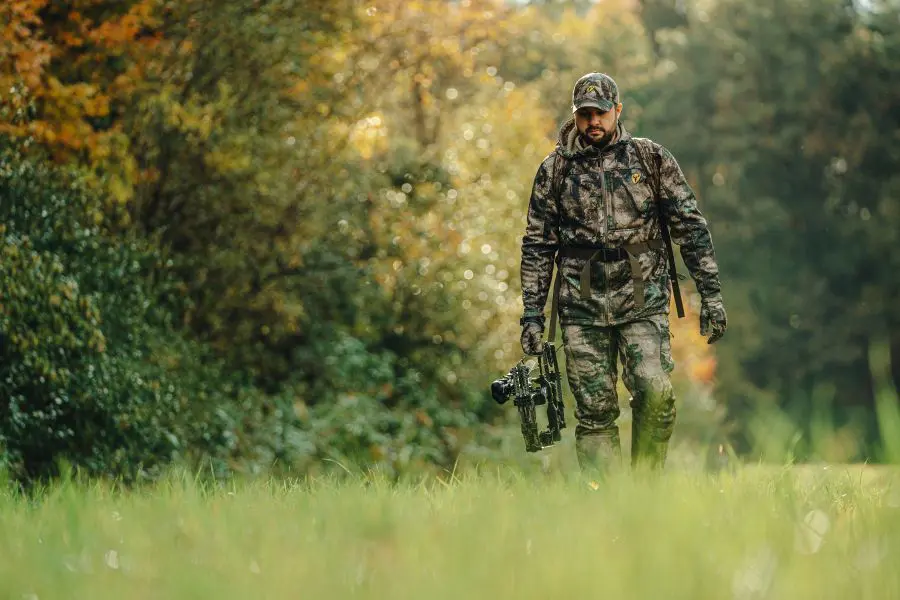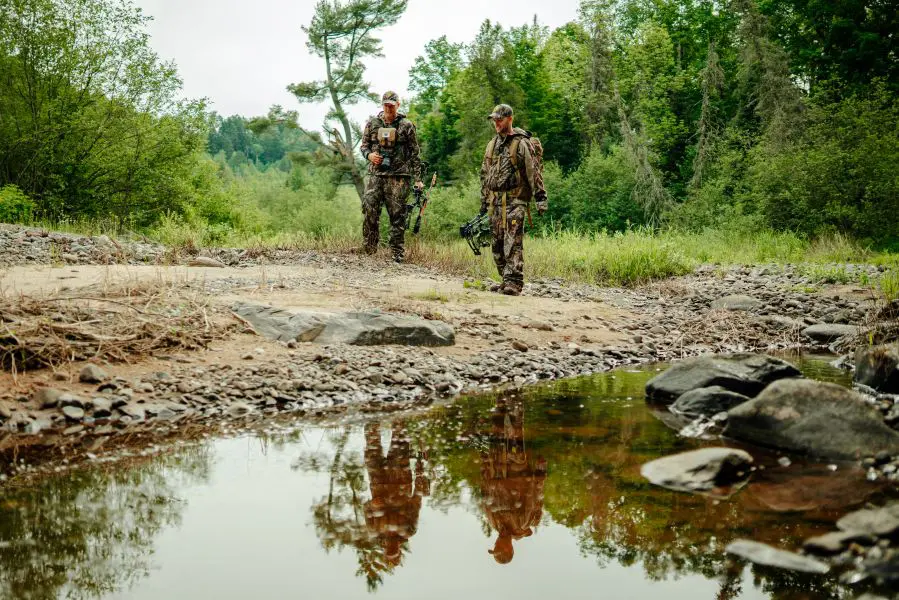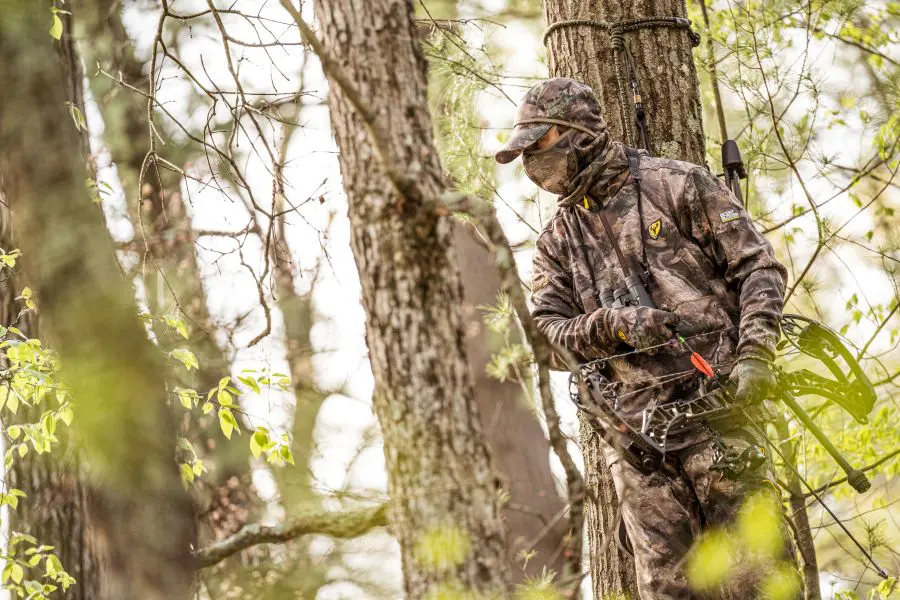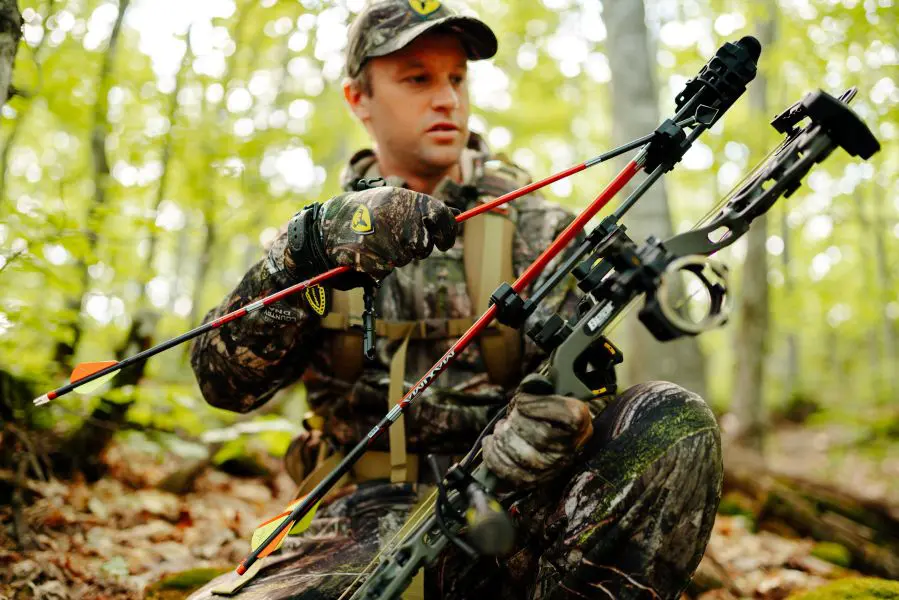When it comes to targeting early-season bucks, the common advice is to stick to evening hunts. Spend time around veteran bowhunters or scroll through online forums, and you’ll hear the same warning repeated: “Mornings aren’t worth it, you’ll just bump deer on the way in and educate them.” The thinking is that mature bucks are already bedded down before daylight, making morning access too risky. While there’s some truth to that logic, it doesn’t mean morning hunts are off the table, especially for those who don’t have evening hunts as an option.
Nearly twenty years ago, I worked as a furniture salesperson, and as the new guy, I was assigned the less favorable shift, 11:00 a.m. to 8:00 p.m. That meant if I wanted to hunt, mornings were my only option, even during the early season. While it’s not typically recommended, I found ways to make it work. I’d wake up extra early to get to my stand well before first light, minimizing the chance of spooking deer or giving them enough time to settle and return if I did. Those early efforts paid off, and after finding success during that time, I’ve continued to follow the same approach. While I now prefer evening hunts, I’ve learned not to shy away from hunting mornings, too.

Why Evenings Get All the Attention
Evening hunts are often seen as prime time for early-season success, and for good reason. In September, bucks tend to follow consistent feeding patterns, making them more predictable. Key food sources, like soybeans, alfalfa, clover plots, and acorns, draw them out of their bedding areas during daylight, especially in the final hour before sunset. With daytime temperatures running high, bucks typically wait for the cooler part of the day before getting on their feet. This late-day movement makes evening hunts easier to plan and less intrusive. Unlike morning hunts, you don’t risk spooking deer in the dark on your way in. Instead, you can quietly access a stand downwind of a food source and wait for the deer to come to you.
Of course, that kind of strategy assumes ideal conditions—ample time, flawless access, and a perfect setup—not something every hunter has access to. A good friend of mine once told me he wanted to bowhunt a particular spot in late September, but the only time he could go was early Saturday morning. I encouragingly said, “Let’s do it, we’ll make it work.” So, we headed in well before daylight and climbed into a double stand setup. He brought his bow, and I brought the camera.
The foliage was still thick with summer greenery, but the white oaks had just started dropping acorns, and deer were already moving early in the mornings. As luck would have it, the first deer we saw working through the timber was a mature buck. It fed straight toward us and passed right beneath our stand, giving my friend a perfect twelve-yard broadside shot. The footage wasn’t ideal due to the dense cover, but we still caught the shot on camera, and his lighted nock lit up beautifully as it zipped through the buck.
We had to sit longer in the dark than we preferred, but it was worth it. With the right effort and preparation, morning hunts can absolutely lead to success.
When Mornings Are Your Only Option
Let’s be honest, many hunters simply don’t have the luxury of evening hunts. Work obligations, family responsibilities, or school pickups often make mornings the only window of opportunity to get in the woods. Fortunately, early-season mornings can offer some of the most comfortable conditions to be in the stand. With cooler temperatures, less sweat, and fewer bugs, those early hours can make for a more enjoyable hunt. So, if mornings are all you’ve got, don’t count yourself out. Tagging a buck is still very possible; you just need to adjust your strategy to make it work.
How to Make Morning Hunts Work
Hunt near bedding rather than foodin the mornings, as bucks are already heading back to their bedding area. If you try to sit over a food source at daylight, you’ll probably be too late. Instead, focus your hunt closer to known bedding spots. When my friend shot his buck in the green-covered timber, we had set up on a transition trail or staging area between a feeding field and thick cover, where bucks feel safe yet can still feed slowly on their way back to the bed. Since we arrived when the buck was likely still feeding in the fields, we were able to enter our stand without being spotted.
It is also crucial to use trail cameras effectively. Cell cameras can be beneficial. Place a few cameras along trails leading to bedding areas and observe when bucks pass by. If a mature buck appears an hour or more after daylight, you have time to get in early before he moves through. However, if he passes about 30 minutes before legal shooting light, he might be bedding nearby. That’s a hunt you’ll want to avoid.
When there’s a chance to hunt an early-season buck, you must get in early and stay quiet. Morning hunts require waking up early. Aim to be in the tree at least an hour before first light. Use quiet gear, wear rubber boots, and avoid loud, leafy trails. The goal is to slip in unnoticed and be ready before the deer arrive.

Hunt the First Cool Morning After a Heat Wave
It’s not just hunters with packed evening schedules who can benefit from a few early-season morning hunts. When the conditions line up, any hunter can take advantage of a crisp morning sit. While warm weather typically keeps bucks bedded longer, a sudden drop in temperature can prompt them to move earlier. Those first cool mornings of the season are often just enough to get a buck on his feet during legal shooting light. That said, be strategic about when you hunt in the morning. The wrong wind or too much pressure near a bedding area can quickly spoil the opportunity. Hold off on your best spots until the conditions are in your favor. Yes, the early-season evening sit is often the easiest way to succeed, but it’s certainly not the only one. Many mature bucks have been taken during early morning hunts, primarily when the hunter has used the wind wisely, hunted smart, and adapted to the deer’s movements. If mornings are your only chance to get into the woods, take it. Refine your plan, stay determined, and you may tag a buck before most hunters even get in a stand.


